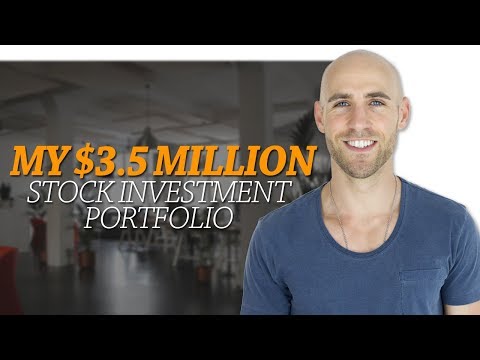Contents
If the firm’s capital is geared higher for a long period, then it would be difficult for them to pay off the debt, and as a result, they need to file for bankruptcy. From the above example, we can see that preferred stock and bonds are dividend & interest-bearing funds. Term DebtLong-term debt is the debt taken by the company that gets due or is payable after one year on the date of the balance sheet. It is recorded on the liabilities side of the company’s balance sheet as the non-current liability. Now let’s look at the formula to calculate the ratio all by ourselves to understand the nitty-gritty of a firm’s capital structure. The term is mostly used in the U.K., and in America, capital gearing is equivalent to the term financial leverage.

We will take a few examples to illustrate capital gearing to cover this concept from all aspects. Let’s understand what we will include in the Common Stockholders’ Equity and Fixed Interest-bearing funds. Broadly, Capital Gearing is nothing but Equity to Total Debt Ratio. This critical information about capital structure makes this ratio one of the most significant before investing. Total-debt-to-total-assets is a leverage ratio that shows the total amount of debt a company has relative to its assets.
What is Capital Gearing?
After reading this article you will learn about the concept of capital gearing and factors affecting it. The dividend payout ratios is 100% i.e., there is no retained earnings. Every capital is the optimum capital structure as per NOI approach. The business risk remains constant at every level of debt equity mix. NI approach shows the effect of leverage on overall cost of capital.
- However, what is important to note is a sudden change in the Shareholder’s equity.
- Also, preferred stockholders generally do not enjoy voting rights.
- If it needs more capital, a number of different securities will be selected to raise funds in the capital structure.
Financial risk factor is involved in the use of debt in the total capital of a firm. If profits are low, lower proportion of debt should be used so that interest burden on the firm does not pose a threat to the existence of the firm. A number of factors like features of individual securities, average cost of each source, form of control over the concern, extent of risks involved, etc., influence the capital structure decision. The CAPM explains why different companies give different returns. It states that the required return is based on other returns available in the economy and the systematic risk of the investment – its beta value.
Definitions of Capital Structure
In an ungeared company , there is a straight relationship between profits from operations and earnings available to shareholders. Once gearing, and therefore interest, is introduced, the amounts available to ordinary shareholders become more volatile. Might suggest that the rate of return would be lowered if the company reduced its dividends or the growth rate. All that would happen is that a cut in dividends or dividend growth rate would cause the market value of the company to fall to a level where investors obtain the return they require. The dividend growth model allows the cost of equity to be calculated using empirical values readily available for listed companies. Measure the dividends, estimate their growth , and measure the market value of the share .
Thus, an appropriate capital structure should be such as to maximise the returns on stock at the minimum level of financial risk. Further, there should be scope for expansion of business by raising the capital as when required. The capital structure of a firm should not pose risk to ownership control. A firm can use debt in a larger proportion in the capital structure of a firm, if the level of expected profits is high.
Risk profile – the family members may be reluctant to take on further debt. The risk of bankruptcy mentioned above, is of greater concern to undiversified family owners than to the typically well diversified outside investor. Convertible bond issue – convertibles carry the right of conversion to equity at some future date. The company must show that it has sufficient working capital forits current needs and for the next 12 months. More generally, adescription of future plans and prospects must be given. The company must be able to provide a revenue earnings record forat least 75% of its business for the previous 3 years.

In the case of a new project, managers forecast maybe higher andmore realistic than that of the market. If new shares were issued inthis situation there is a possibility that they would be issued at toolow a price, thus transferring wealth from existing shareholders to newshareholders. In these circumstances there might be a natural preferencefor internally generated funds over new issues. If additional funds arerequired over and above internally generated funds, then debt would bethe next alternative. Such a situation will increase the prices of shares in the stock exchange. On the other hand, it may also happen that no profit is left after paying the debenture holders and preference shareholders.
Companies that are in cyclical industries and have high gearing ratios may, therefore, be viewed by investors as risky. In stable industries, however, a high gearing capital gearing refers to the relationship between equity and ratio may not present a concern. Utility companies, for example, require large capital investments, but they are monopolies and their rates are highly regulated.
Business Management Ideas
Myers has suggested asymmetric information as an explanation forthe heavy reliance on retentions. Suggest the issues that should be considered by the board in determining whether debt https://1investing.in/ would be an appropriate source of finance. After a certain level of gearing companies will discover that theyhave no tax liability left against which to offset interest charges.
A high coupon rate has to be paid to compensate the investor for this risk. Rights issue to existing shareholders – this option is the simplest method, providing the existing shareholders can afford to invest the amount of funds required. The basic choice for a business wanting to raise new finance is between equity finance and debt finance. Where gearing is high, the interests of management and shareholders may conflict with those of creditors. Agency costs have a further impact on a firm’s practical financing decisions.
For example, if a company is said to have a capital gearing of 3.0, it means that the company has debt thrice as much as its equity. The problem of capital gearing is very important in a company. It has a direct bearing on the divisible profits of a company and hence a proper capital gearing is very important for the smooth running of an enterprise. A company’s capital structure is a function of the nature of its business and how risky the particular business is and therefore, a matter of business judgment. Business risk is constant over time and it is independent of its capital structure and financial risk.
Capital Gearing
For example, when a firm’s capital is composed of more common stocks than other fixed interest or dividend-bearing funds, it’s said to have been low geared. On the other hand, it’s highly geared when the firm’s capital consists of less common stocks and more interest or dividend-bearing funds. The total capitalisation of the above two companies is the same i.e.
Assume that a company can issue three types of securities, i.e., equity shares, preference shares and debentures. Capital Gearing determines the ratio between the various types of securities to the total capitalisation. Capital Gearing Ratio is a useful ratio to find out whether a firm’s capital is properly utilized or not. To investors, the importance of the capital gearing ratio lies in whether the investment is risky or not. For example, if the firm’s capital consists of more interest-bearing funds, it is a riskier investment to the investors. On the other hand, if the firm has more common equity, the investors’ interest would be taken care of.
Multiple Choice Questions and Answers
The only differences betweenROCE and ROE will be due to taxation and gearing. Equity holders receive their returns as dividends,which are paid at the discretion of the directors. This makes thereturns potentially quite volatile and uncertain, so shareholdersgenerally demand high rates of return to compensate them for this highrisk. Cash flow forecasts are central to financing decisions – e.g.ensuring that two sources of finance do not mature at the same time. Some firms operating in high risk industries use mainly equityfinance to gain the flexibility not to have to pay dividends shouldreturns fall.
Therefore a company can manage to pay dividends to its equity shareholders at higher rates. The debt-to-equity ratio compares total liabilities to shareholders‘ equity. It is one of the most widely and consistently used leverage/gearing ratios, expressing how much suppliers, lenders, and other creditors have committed to the company versus what the shareholders have committed. Different variations of the debt-to-equity ratio exist, and different unofficial standards are used among separate industries. Banks often have preset restrictions on the maximum debt-to-equity ratio of borrowers for different types of businesses defined in debt covenants. The term capital gearing refers to the ratio of debt a company has relative to equities.
This should not be a surprise given that ROCE is anindication of performance before financing, or underlying performance. Consideration should be given to alternatives such as leasing the machinery, or seeking venture capital funding . This must be provided for the last 3 full years, and any published later interim period. Whilst far from target, decisions should be governed by static trade-off theory. Full BioAmy is an ACA and the CEO and founder of OnPoint Learning, a financial training company delivering training to financial professionals. She has nearly two decades of experience in the financial industry and as a financial instructor for industry professionals and individuals.
Companies with less cash and higher gearing will be more prone to under-invest. Given this, firms will strive to reach the optimum level by means of a trade-off. The tax benefits of debt only remain available whilst the firm is in a tax paying position. Then, the chapter explains the main features of the key debt and equity financing options. A financial manager often has to decide what type of finance to raise in order to fund the investment in a new project. The debt-to-GDP ratio measures the proportion of a country’s national debt to its gross domestic product.
